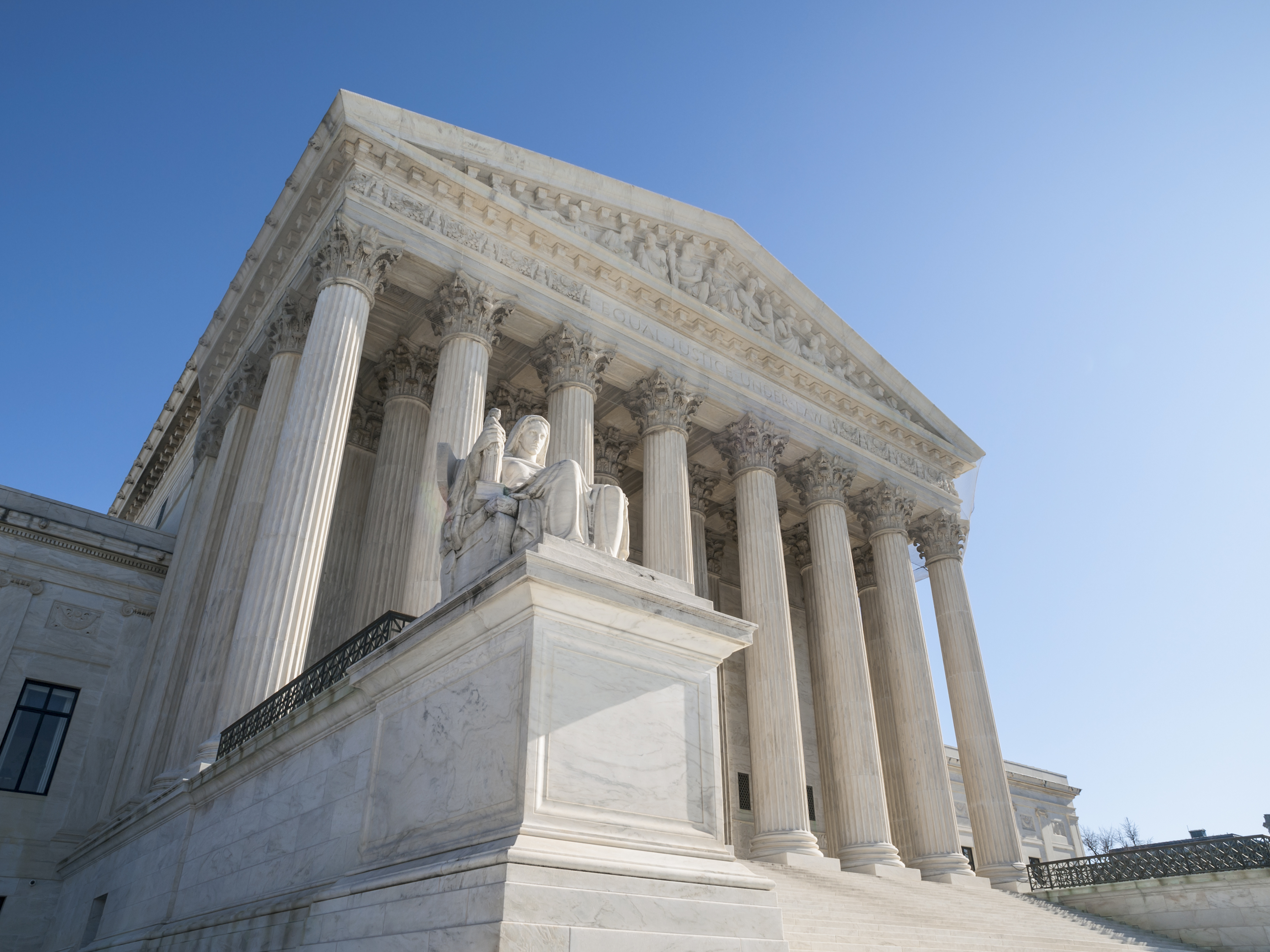
Two of the court's four liberals suggested the unique history of the Peace Cross in the Washington suburb of Bladensburg, Marylandd, may provide a way to accommodate its position on public land in a highway median.
But more than an hour of oral arguments showed the difficulty the court faces when it must decide whether government's involvement with a religious symbol has an allowable sectarian purpose or is an unconstitutional embrace of religion.
The Bladensburg Peace Cross, made of granite and cement, was built in 1925 and paid for by local families, businesses and the American Legion. But the 40-foot cross sits on land owned since 1961 by a state commission that pays for its maintenance and upkeep.
The legal challenge began with the American Humanist Association, a nonprofit atheist organization that has filed similar lawsuits throughout the country.
For decades, the Supreme Court - whose marshal opens proceedings with a plea that "God save the United States and this honorable court" - has struggled to come up with a clear test on which actions or displays violate the Constitution's prohibition against government establishment of religion.
The Maryland-National Capital Park and Planning Commission, which inherited the monument, says the court need not break new legal ground to allow the Bladensburg landmark to remain.
The cross carries "an independent secular meaning," that makes it constitutional, Neal Katyal, a Washington lawyer representing the commission, told the justices. Besides being a symbol that is uniquely associated with World War I, the cross it is situated among other monuments to veterans, he said.
The court in the past has found that religious symbols in context can be constitutional, he said, adding: "Just look up."
In the frieze above the justices' heads in the ornate courtroom is a depiction of the Ten Commandments.
In questioning Monica Miller, representing the cross's challengers, Justice Elena Kagan also there was an association between World War I and the cross that is "really quite different" from the use of the cross in other contexts. "Why isn't that important?" she asked.
And Justice Stephen Breyer, another member of the court's liberal wing who has objected in the past to blurring the line between church and state, wondered about history too.
Erecting a cross today would be problematic, he suggested, but maybe that didn't mean all had to come down. What if the court said, "Yes. Okay. No more," he said, adding "We're a different country now."
Justices Sonia Sotomayor and Ruth Bader Ginsburg seemed to think there was no way to disconnect the preeminent symbol of Christianity from its religious roots. Christians wear the cross as a symbol of their devotion, Ginsburg said.
And Sotomayor said the size of the cross "dwarfs buildings, it dwarfs people."
Miller said the monument did not have to come down, but could be moved to another spot or the land on which it sits could be returned to a private organization such as the American Legion, which was involve in its construction.
But the way it towers over a busy intersection used by thousands of commuters each day sends an unconstitutional message that government favors one religion over another.
The monument's defenders say a Maryland district court judge got it right when she noted that the cross had stood for decades without controversy and that it met the court's test of having a secular purpose, that its "primary effect" was religious neutrality and that there was not excessive entanglement of government and religion.
The commission's brief tells the court: "Virtually every member of the court has agreed that, at minimum, the government may display symbols associated with religion where the display's purpose and objective meaning are predominantly secular, or where the display fits within a long national tradition of similar practices."
But a panel of the U.S. Court of Appeals for the 4th Circuit looked at the same facts and the same test and concluded otherwise.
"The display aggrandizes the Latin cross in a manner that says to any reasonable observer that the commission either places Christianity above other faiths, views being American and Christian as one in the same, or both," the panel said in a 2-to-1 ruling.
That is the key, says the American Humanist Association in its brief.
While neither the commission nor the association asks the court to adopt a new test, the American Legion and the Trump administration do: to determine whether the government action is "coercive."
The Legion says in its brief that government practices should be found to violate the Establishment Clause only if they "coerce religious belief, practice, or financial support - whether through compelled profession or observance, excessive proselytization, or other historically grounded means."
A passive display like the Peace Cross would seldom meet such a test, the brief says.
But even the conservative justices they would need to change the court's precedents seemed to think a coercion standard would be no more workable than the court's current muddled jurisprudence on religious symbols and actions, which Justice Neil M Gorsuch characterized twice as a "dog's breakfast."
The combined cases are The American Legion v. American Humanist Association and Maryland-National Capital Park and Planning Commission v. American Humanist Association.
Sign up for the daily JWR update. It's free. Just click here.
(COMMENT, BELOW)


 Contact The Editor
Contact The Editor
 Articles By This Author
Articles By This Author